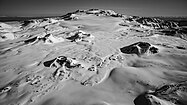User:Gulmammad
| This user has rollback rights on the English Wikipedia. (verify) |
| This user has autoreview rights on the English Wikipedia. (verify) |
| This user has reviewer rights on the English Wikipedia. (verify) |
| This user has made thousands of contributions to Wikipedia. |
Contributions
• Sokolov-Ternov effect
• Hamilton's principal function
• Hamilton's characteristic function
• Experimental observation of Hawking radiation
• Particle number operator*
• Self-organization in biology*
• Aleksandr Chudakov
• Alexey Andreevich
• A. P. Balachandran
• Igor Ternov
• Mark Trodden
• Stanislav Mikheyev
• Alexei Smirnov*
• Shamil Asgarov
• Seifallah Randjbar-Daemi
• Habil Aliyev
• Ahmad Bakikhanov
• Aşık Khanlar
• Suleyman Valiyev
• Heino Finkelmann
• Tom Lubensky
• Lubna al-Hussein
• Sheylanli tribe
• Sheylanli
• Boyat
• Ashaghy Aylis
• Agbash
• International Liquid Crystal Society
• British Liquid Crystal Society
• International Centre for Theoretical Physics*
• ANS Group of Companies
• ANS TV
• ANS ChM
• Khudafarin Bridges
• Azerbaijan Time
• Yemen Türküsü
• Jujalarim
• Föppl–von Kármán equations
- * Didn't create but significantly contributed
InSight was an American spacecraft mission launched by NASA and the Jet Propulsion Laboratory, consisting of a robotic lander designed to study the deep interior of the planet Mars. Launched in 2018, the mission was active until late 2022, when contact with the lander was lost. InSight's objectives were to place a seismometer on the surface of Mars to measure seismic activity and provide accurate three-dimensional models of the planet's interior, and to measure internal heat transfer using a heat probe to study Mars's early geological evolution. This was intended to provide a new understanding of how the Solar System's terrestrial planets (Mercury, Venus, Earth and Mars) as well as the Moon formed and evolved. This 2015 photograph shows three technicians working on the InSight lander with its solar panels deployed during preflight testing in a cleanroom in Denver, Colorado.
Photograph credit: NASA / JPL-Caltech / Lockheed Martin
Today's featured article
The Mount Edziza volcanic complex (MEVC) is a group of volcanoes and associated lava flows in northwest British Columbia, Canada. Located on the Tahltan Highland, the MEVC has a broad, steep-sided lava plateau; its highest summit is 2,786 metres (9,140 feet). Its volcanoes formed over the last 7.5 million years during five cycles of magmatic activity which spanned four epochs; the most recent eruptions took place in the last 11,000 years. Current activity occurs in the form of hot springs. The MEVC has warm summers and cold, snowy winters; snow and ice remain on the highest peaks year-round. Indigenous peoples have lived adjacent to the MEVC for thousands of years. Historically, the local Tahltan people used volcanic glass from the MEVC to make tools and weaponry. Animal species such as birds, rodents, bears, sheep, goats, moose and caribou inhabit the area. A large provincial park dominates the MEVC, which can only be accessed by aircraft or by a network of footpaths. (Full article...)


